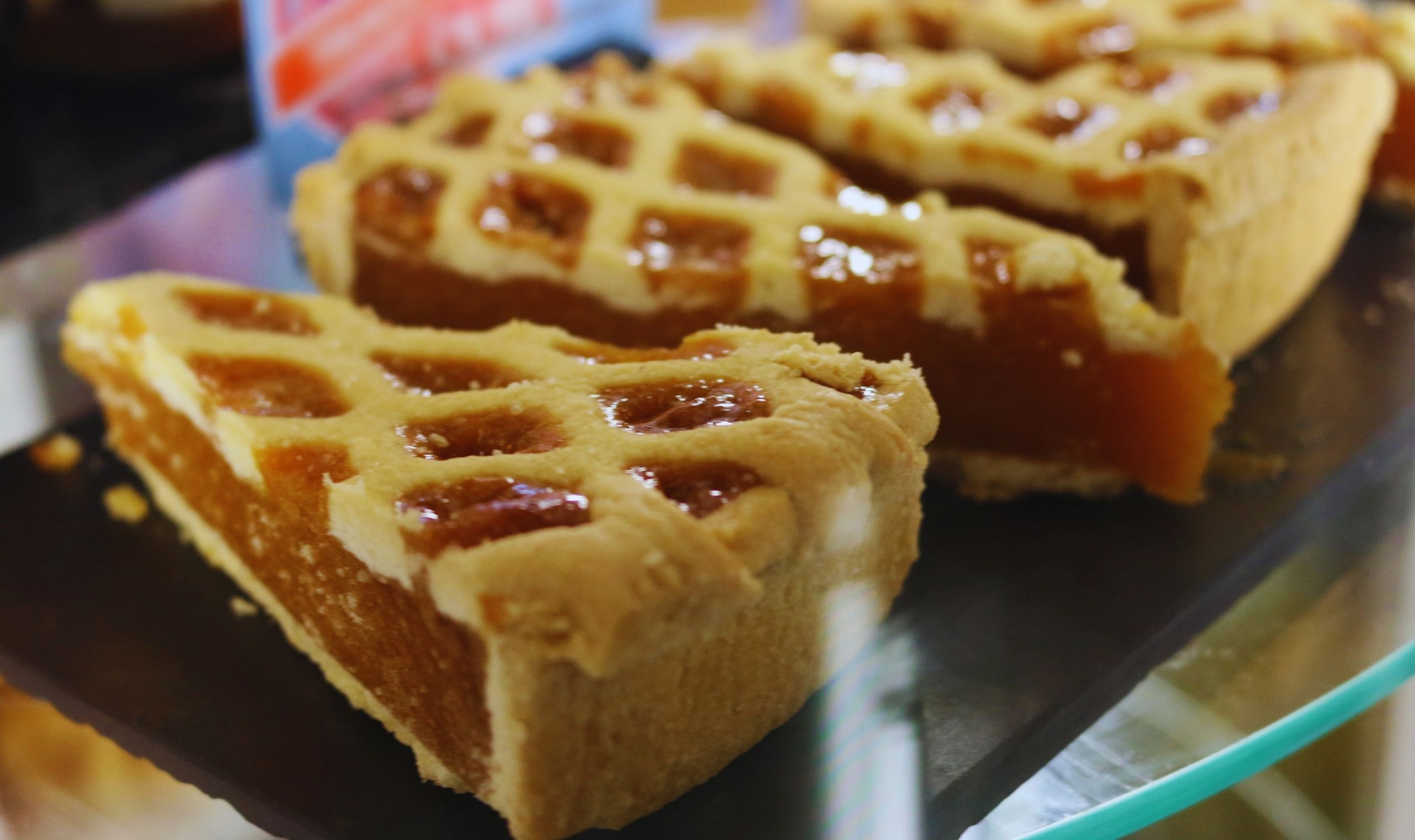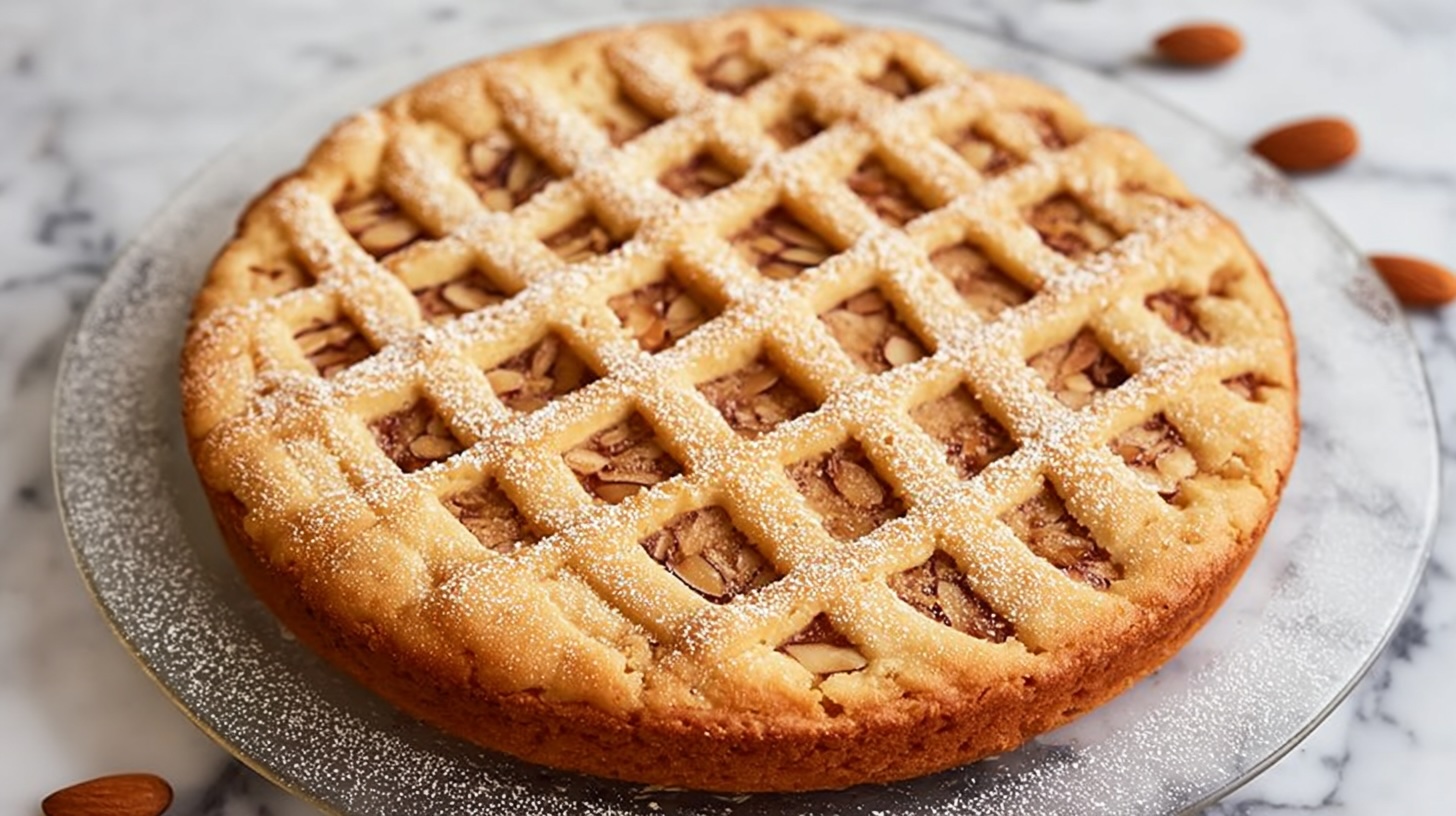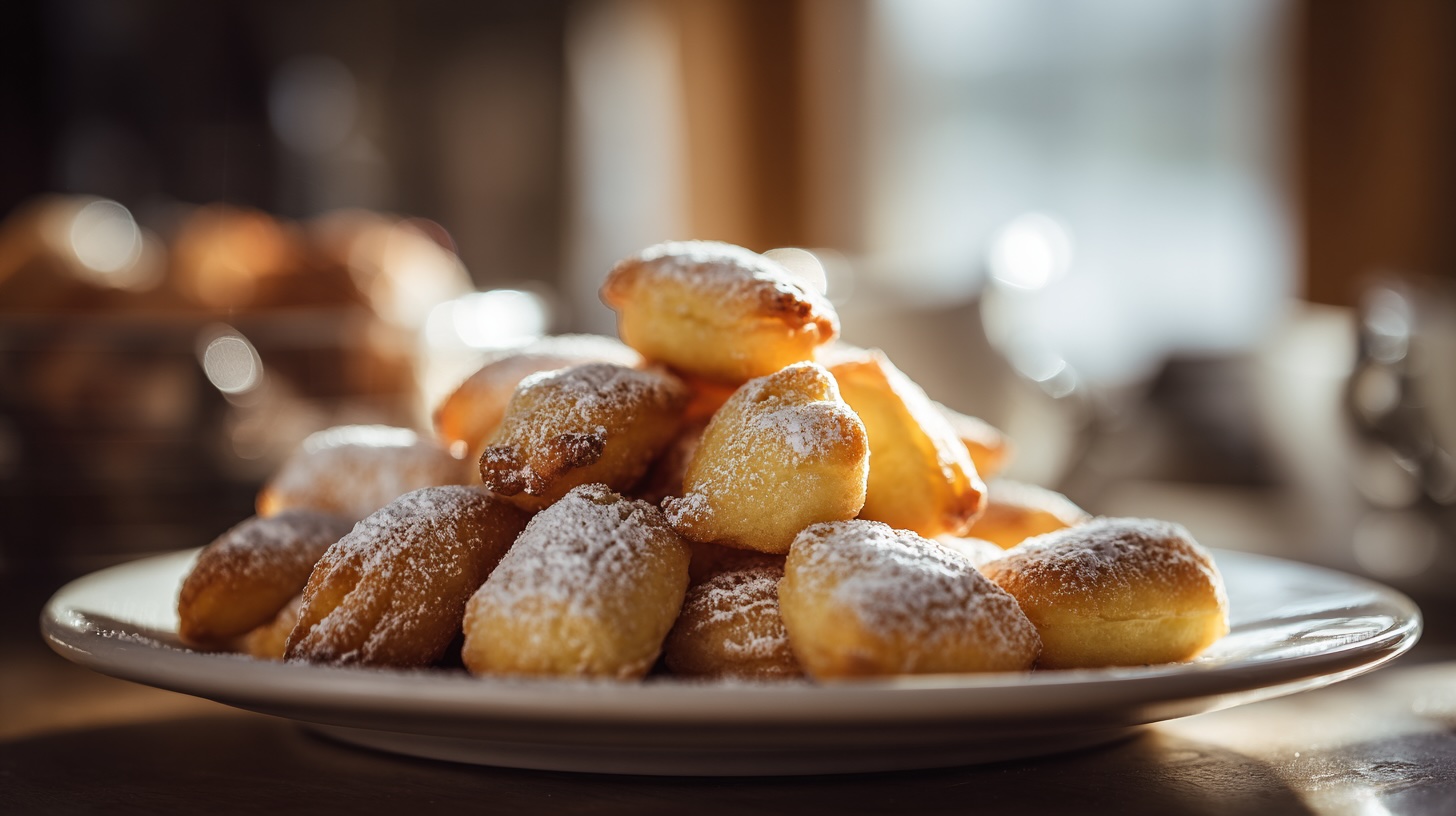Treacle Tart: The Quintessential English Sweet Dish
The Origins of Treacle Tart
Treacle tart, a beloved dessert in English culinary tradition, boasts a rich history that dates back several centuries. This sweet dish is characterised by its simplistic yet flavorful ingredients, primarily consisting of golden syrup, breadcrumbs, and lemon juice. The origins of treacle tart can be traced to medieval times, when treacle, a term that refers to syrup derived from the sugar refining process, was commonly used in various recipes. The dish was often served as a festive treat and gradually gained popularity among different social classes within England.
Golden syrup, an essential component of treacle tart, was first produced in the late 19th century by the British company Lyle’s. This syrup is a concentrated form of sugar syrup and lends a distinctive sweetness to the tart. Its creation marked a turning point in English baking, as it became widely accessible and featured in numerous recipes, paving the way for the treacle tart to emerge as a staple dessert. As the recipe evolved, the inclusion of breadcrumbs not only provided structure but also absorbed the moisture from the syrup, resulting in a harmonious blend of flavors and textures.
The addition of lemon juice is another critical ingredient that enhances the tart’s profile, balancing the sweetness with a bright acidity. This duality of flavors is what makes treacle tart particularly appealing, ensuring that each bite is both satisfying and refreshing. Through the years, treacle tart has been celebrated not only for its delightful taste but also for its versatility, making it a staple in English households to this day. As it gained recognition in literature and popular culture, treacle tart remains a symbol of English cuisine, inviting both nostalgia and appreciation from generations past and present.
A Journey Through History
The treacle tart, a beloved dessert in Britain, has a rich history that dates back to its earliest mentions in literature and cookbooks, revealing its evolution into a quintessential English sweet dish. The earliest recorded reference can be traced back to the 19th century, although recipes for similar sweet pastries can be found in medieval texts. Traditionally, treacle tart comprises a shortcrust pastry filled with a mixture of golden syrup, breadcrumbs, and lemon juice, creating a delightful balance of sweetness and acidity.
As time progressed, the treacle tart became a staple of British cuisine, with variations emerging across regions. Its significance deepened as it began to feature prominently in various literary works. One of the most notable references appears in J.K. Rowling’s series featuring the character Harry Potter, where treacle tart is famously identified as Harry’s favorite dessert. This connection to popular culture has cemented the tart’s status, leading to an increased interest in this traditional sweet. The book series has inadvertently contributed to its revival in modern dessert menus, as chefs seek to recreate the nostalgic flavors associated with both the dish and its literary ties.
Moreover, treacle tart has not only been celebrated in literature but has also gained a prominent place in the hearts of the British people. Its preparation is often associated with childhood memories and family gatherings, making it more than just a dessert; it is a symbol of comfort and tradition. As culinary practices evolved, the treacle tart managed to maintain its original essence, showcasing the enduring appeal of this iconic dish. Through generations, it continues to be cherished and enjoyed, a testament to its lasting significance in British culture and gastronomy.
Ingredients and Techniques
Treacle tart, a delightful staple of English cuisine, is primarily composed of a few essential ingredients that collectively create its signature flavor and texture. The star of the dish is golden syrup, a thick, amber-colored syrup made from sugar cane or beet sugar. This sweet ingredient contributes not only to the tart’s sweetness but also imparts a rich, molasses-like flavor. Typically, golden syrup can be found in most grocery stores, making it a widely accessible component for home bakers.
Another crucial ingredient is fresh white breadcrumbs, which serve to thicken the filling while providing a pleasant contrast to the syrup’s stickiness. The use of breadcrumbs ensures a light texture that sets treacle tart apart from other dense desserts. It is recommended to use homemade breadcrumbs, as they can absorb more syrup compared to store-bought varieties, enhancing the overall consistency of the filling.
Lemon juice and lemon zest are often added to the mixture for a hint of acidity that brightens the dish and balances the sweetness. This citrus element is vital; without it, the tart may become overly cloying. Other potential ingredients may include cream and eggs, which can be incorporated for a richer and more custard-like texture.
When making treacle tart, mastering the technique of pastry-making is essential. A shortcrust pastry typically encases the filling, creating a buttery, flaky base. The pastry should be blind-baked to prevent sogginess, ensuring that it maintains its structure under the syrupy filling. It’s best to bake the tart until it is golden brown, allowing the filling to bubble slightly but not overflow.
Variations can enhance the traditional recipe; for instance, adding ginger or spice can introduce warmth, while nuts can add a delightful crunch. By experimenting with these ingredients and techniques, bakers can personalize their treacle tart experience while keeping the essence of this quintessential English sweet dish intact.
Treacle Tart in British Popular Culture
Treacle tart has attained a distinguished place in British popular culture, often invoking nostalgia and warmth among those familiar with the dish. As a quintessential English sweet, it has made notable appearances across various media forms, including literature, television, and film. Its rich, sweet flavor and distinct texture have captured the hearts of many, leading to its frequent representation in popular narratives.
One of the most renowned references to treacle tart is found in the globally beloved Harry Potter series by J.K. Rowling. The character Harry Potter demonstrates a fondness for the dish, especially when it is mentioned as one of his favorite desserts. This inclusion in the narrative not only highlights the tart’s significance within British culinary tradition but also serves to bolster its recognition among a diverse, international audience. The portrayal of treacle tart in this influential series has sparked a renewed interest in the dish, prompting many fans to seek out recipes and try their hand at creating this delightful dessert.
Beyond the world of literature, treacle tart has made its way into television shows and films. Various British dramas and comedies have prominently featured the dish, often depicting it as a comforting staple of home-cooked meals. Such representations serve to reinforce treacle tart’s status as an emblem of British culture, evoking images of family gatherings and traditional celebrations. By weaving treacle tart into the fabric of storytelling, these media outlets contribute to the dish’s enduring legacy and popularity.
In summary, treacle tart’s depictions in British media play a significant role in cultivating its popularity. By resonating with audiences through references in beloved stories like Harry Potter, the dish continues to hold a cherished place in the hearts and palates of many, ensuring its status as a classical sweet enjoyed by generations.
Treacle Tart: A Sweet Addition to British Humor
Treacle tart, a beloved staple in British cuisine, has not only captured the hearts (and stomachs) of many, but it has also made its mark in the world of humor. British humor often intertwines with culinary delights, resulting in a delightful blend of laughter and sweetness. The very nature of treacle tart, with its sticky filling and crisp pastry, serves as a metaphor for life’s little quirks, lending itself well to lighthearted jokes and puns.
One of the popular avenues in British humor is the use of food as a focal point in storytelling. From well-timed quips about sticky situations to playful references in literature and film, treacle tart emerges as a recurring character in these narratives. For instance, a classic one-liner might be, “Why did the treacle tart go to therapy? It couldn’t cope with its filling!” This simple joke showcases how the endearing traits of treacle tart can inspire laughter, resonating well with audiences familiar with this sweet dish.
Moreover, the infamous Harry Potter series brought treacle tart into the limelight, further enhancing its status in British culture. The whimsical notion of the beloved character Harry Potter enjoying a slice of treacle tart adds an extra layer of charm, leading fans to craft their own jokes, such as, “What did Harry say when he couldn’t find his treacle tart? ‘This is a spell-ting situation!’”
Overall, the playful exploration of food like treacle tart through humor elevates its enjoyment, making it more than just a dessert but a source of joy and laughter. It is this delightful interplay between culinary arts and comedy that ensures treacle tart remains a cherished part of British culture, inviting more jokes and light-hearted banter.
Classic Treacle Tart Recipes to Try
Treacle tart is a beloved English dessert that balances sweetness with a hint of tang, making it a favorite among many. Below are several classic and contemporary recipes that you can try at home, along with variations to suit your personal taste preferences.
One of the fundamental recipes for making a traditional treacle tart involves simple ingredients: a shortcrust pastry, golden syrup, fresh breadcrumbs, and lemon juice. To prepare, roll out the pastry and line a tart tin, then fill it with a mixture of golden syrup, breadcrumbs, and a splash of lemon juice to enhance the flavor profile. Bake until set, which typically takes about 30 to 40 minutes.
If you want to add a modern twist, consider incorporating spices such as nutmeg or ginger into the filling. Both spices can complement the sweetness of the treacle, creating a richer flavor. Some recipes even suggest adding zest or juice from citrus fruits like orange or lime for a refreshing contrast.
Another variation is to use different types of syrup, such as maple or dark treacle, to add depth to the classic flavor. Experimenting with alternative flours, such as almond or whole wheat flour for the crust, can also cater to dietary preferences without compromising taste. For those keen on incorporating nuts, finely chopped pecans or hazelnuts can provide an added crunch.
Personalizing your treacle tart can be as simple as serving it with a dollop of clotted cream or a scoop of vanilla ice cream, allowing the contrasting textures to enhance your dining experience. Alternatively, serve it warm or cold, based on your preference. With these diverse methods, treacle tart can be adapted to suit various tastes, making it a delightful dish for any occasion.
Where to Find the Best Treacle Tart in England
Treacle tart, a classic English dessert, can be found in numerous establishments across England, each presenting its unique take on this beloved recipe. One of the standout locations is St. John Bakery in London. Renowned for its commitment to traditional baking methods, St. John serves a treacle tart that boasts a perfectly balanced filling of golden syrup, breadcrumbs, and lemon juice, complemented by a rich, buttery pastry. The bakery’s dedication to fresh, high-quality ingredients ensures that every slice is a delightful experience.
In the quaint town of Bath, the Bath Bun is a must-visit spot for anyone looking to indulge in treacle tart. Here, the dessert features a distinct twist with added flavors of ginger and nutmeg, providing a spiced complexity that sets it apart from the more traditional versions. The bakery’s charming ambiance adds to the overall experience, making it a popular destination for both locals and tourists.
Another fantastic option can be found at the historic Olde Bell pub in Berkshire. This establishment offers a classic treacle tart served warm with a generous dollop of clotted cream. The combination of the tart’s slight chewiness and the cream’s rich texture makes for a quintessentially English dessert experience. The pub’s traditional decor and welcoming atmosphere further enhance its appeal.
For those in search of a more modern interpretation, Fitzbillies in Cambridge offers a contemporary take on the treacle tart. Known for its innovative approach to classic British dishes, Fitzbillies’ rendition incorporates fine pastry with a caramelized top layer, presenting a delightful contrast to the smooth filling. The café’s reputation for quality coffee and vibrant atmosphere makes it an excellent choice for an afternoon treat.
These establishments represent just a fraction of the diverse offerings of treacle tart throughout England. Each location provides a unique interpretation of this iconic dish, showcasing the rich culinary heritage that surrounds it.
Variations Around the World
Treacle tart, widely celebrated as a quintessential English dessert, has inspired a myriad of variations influenced by local cultures and ingredients around the globe. One of the notable adaptations can be found in the culinary traditions of the Caribbean, particularly in Jamaica, where a similar dessert, known as ‘sweet potato pie,’ incorporates sweet potatoes and a blend of spices such as nutmeg and cinnamon. This variation, while distinct in flavor, mirrors the sweetness of the original treacle tart.
In the Mediterranean region, particularly in Greece, a dish called ‘halva’ features some elements reminiscent of treacle tart. Halva typically consists of semolina or tahini and is sweetened with syrup, often including local nuts or dried fruits. Although its texture and presentation differ from treacle tart, the essence of a syrupy sweet treat remains a common theme. This showcases how varying ingredients do not diminish the dessert’s appeal; instead, they enrich it with local flavors.
Moreover, in parts of Asia, a dessert known as ‘syrup cake’ emerges, which utilizes similar techniques of creating a syrupy filling, albeit with regional ingredients such as coconut or pandan for flavoring. The use of rice flour instead of traditional wheat flour offers a gluten-free alternative while maintaining the light, sweet characteristics of the classic treacle tart.
In the United States, particularly in the Southern states, a variant known as ‘pecan pie’ captures the spirit of treacle tart. The traditional filling of treacle is enriched with toasted pecans, giving it a distinctive crunch contrasted with the creamy sweetness of the syrup. These adaptations of treacle tart reinforce its universal appeal while emphasizing the role of local culture in shaping culinary experiences.
The Perfect Pairings: What to Serve with Treacle Tart
Treacle tart, with its rich, sweet flavor profile and slightly sticky texture, offers a delightful culinary experience that can be further enhanced through thoughtful pairings. One of the most popular accompaniments is clotted cream, which adds a rich, velvety texture that complements the tart’s sweetness. The cream’s slight savory note balances the sugary depth of the treacle, creating a harmonious dish that pleases the palate.
Alternatively, vanilla ice cream is an excellent choice, providing a cool, creamy contrast to the warm treacle tart. The creaminess of the ice cream works to soften the intensity of the molasses flavors, making each bite more enjoyable. It can be served either as a scoop alongside the tart or melted slightly on top of a warm slice, allowing the ice cream to mingle with the syrupy layers.
For those who appreciate a more traditional approach, a dollop of whipped cream is a classic enhancement. Light and airy, whipped cream can provide a refreshing counterbalance to the density of the treacle filling, keeping the overall experience light. The subtle sweetness of the cream accentuates the tart without overpowering its charming flavor.
When it comes to beverages, a well-brewed cup of coffee or a rich, dark tea can create an aromatic pairing. The bitterness of coffee, particularly if served black, can cut through the sweetness of the treacle tart, allowing the flavors of the dish to be fully appreciated. For those preferring tea, a robust English breakfast could enhance the experience, grounding the sweetness of the dessert with its tannic structure.
Ultimately, the perfect pairings vary based on personal taste, yet the aforementioned suggestions elevate the enjoyment of this quintessentially English dish. By carefully selecting accompaniments, one can transform a simple dessert into a memorable culinary occasion.



